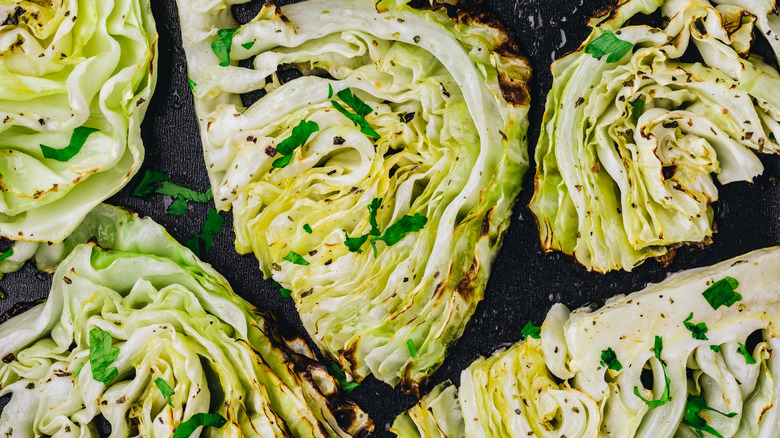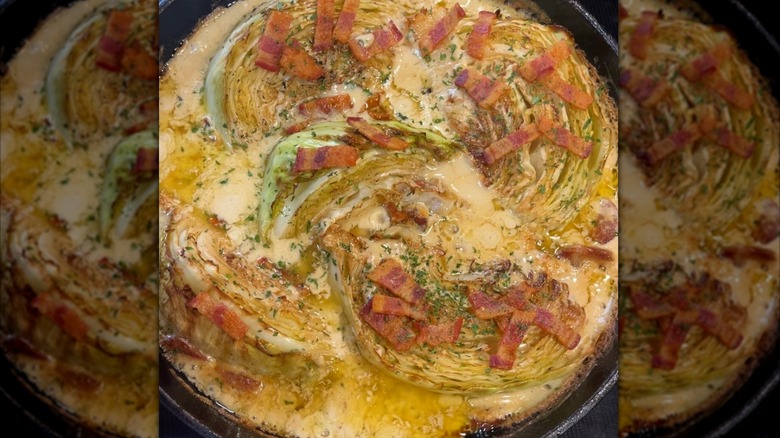Here's The Only Way You Should Be Making Cabbage
Melting cabbage turns that green-headed veg into a luscious dish that is simultaneously silky and hearty, soft and crisp, caramelized and creamy. The name is derived from the way the finished dish seems — to borrow an overused phrase — to melt in one's mouth, as well as the way the cabbage virtually melts into the sauce and other components. To complete the magical effect of this recipe, it's amazing as a leftover — even better than when it's fresh from the oven — as the taste deepens and the cabbage absorbs even more sauce and flavor over time.
The basics of the recipe are to sear wedges of cabbage in a skillet and then set them aside. Combine aromatics, seasonings, dairy, and broth in the same skillet over medium heat, then add a thickening element like a cornstarch slurry or heavy cream. Add the cabbage segments back into the skillet, place the entire pan in a 350-degree Fahrenheit oven, and bake until the vegetable wedges are fork-tender. The sauce may change, but the method of searing and braising remains the same.
While this dish is the type of scrumptious concoction that can convert most any cabbage hater into a fan, it's not complex to cook. It's a one-pan affair that pretty much babysits itself once you've got the elements assembled. This culinary caterpillar (i.e., the cabbage) turns into a delicious butterfly in the oven, and the delectable transformation has had the internet buzzing over viral videos showing how to make it.
Tips for turning that melting cabbage into money
Getting optimal results with your melting cabbage begins with the vegetable itself. While either green or purple cabbage can be used, a sturdy green cabbage is advisable. Some recipes hold that purple cabbage doesn't "melt" as well, and it can dye your creation a less-than-appealing pink. However, cabbages like savoy or napa aren't good candidates, either, as they may fall apart completely.
When segmenting your cabbage, be sure and leave some of the core attached to the leaves, so the wedges stay intact as they cook. You'll want those leaves united — not in a loose scattering — so the layers can absorb all of that amazing flavor from the sauce. Check out Food Republic's guide to the best way to cut and cook cabbage steaks for some pointers on getting the right cut.
Some cooks recommend doing a final broil on high for five minutes before removing the dish from the oven. You can also add a couple of tablespoons of butter once the pan is removed to make it even richer. Topping the finished dish with parmesan and fresh herbs is a nice finishing touch, as well. Allowing the dish to rest for 15 to 20 minutes before serving further amps up the flavor and texture.
You might not readily think of a cabbage recipe with no meat in it as a main dish, but this creation can totally stand on its own as the centerpiece of a meal. It also serves well as a side, of course, but be forewarned that it may steal the show. If you want it in a supporting role on your table, it pairs well with dishes like hearty fall chicken recipes, pork chops, and classic Salisbury steak.


